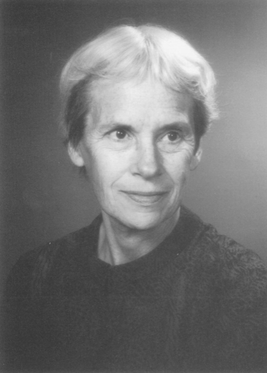Janet Watson facts for kids
Quick facts for kids
Janet Watson
|
|
|---|---|
 |
|
| Born |
Janet Vida Watson
1 September 1923 Hampstead, London, UK
|
| Died | 29 March 1985 (aged 61) Ashtead, United Kingdom
|
| Nationality | British |
| Education | Reading University (1943) Imperial College, Ph.D. (1949) |
| Occupation | Professor at Imperial College London (1958). |
| Spouse(s) | John Sutton (m. 1949–1985) |
| Children | 2 daughters (both died at birth) |
| Parents |
|
Janet Vida Watson (1923–1985) was a very important British geologist. She was a professor of Geology at Imperial College London. She also held important roles like being a vice president of The Royal Society. In 1982, she became the first woman to be President of the Geological Society of London. Janet Watson is famous for helping us understand the Lewisian complex in Scotland. She also wrote or co-wrote several geology books, including Beginning Geology.
Contents
Janet Watson's Early Life
Janet Watson was born on September 1, 1923, in Hampstead, London. Her father, David M. S. Watson, was a palaeontologist. This means he studied ancient life, like dinosaurs. He was also a professor at the University of London. Her mother, Katharine M. Parker, studied how living things develop before they are born.
Janet and her sister, Katharine Mary, grew up in South Hampstead. Janet went to South Hampstead High School, which was known for its strong science teaching. In 1943, she went to Reading University to study General Science. She did very well, earning a top degree in biology and geology. After this, she went to Imperial College and graduated with a top degree in Geology in 1947.
In 1949, Janet married John Sutton, who was also a geologist. They worked together on many projects throughout their lives. Janet Watson passed away on March 29, 1985, when she was 61 years old.
Janet Watson's Career in Geology
After graduating in 1943, Janet first worked at a research institute. She studied how chickens grew and what they ate. But she found this job boring. She then taught biology for a short time. By the end of World War II, she decided she wanted to be a geologist.
In 1945, she joined Imperial College London. She earned another first-class degree in Geology in 1947. Her interest in geology grew when she worked on a mapping project in the Scottish Highlands in 1946.
Studying Ancient Rocks in Scotland
In 1947, Janet started her PhD. She began studying the Lewisian complex in northern Scotland. This is a very old group of rocks. She worked with John Sutton, who later became her husband. They both finished their PhDs in 1949.
In 1951, Janet and John published their research. This paper was very important for understanding ancient rock formations. They showed that you could understand how these rocks changed over time. They suggested that older rocks (called Scourian) were affected by a younger event (called Laxfordian). This was seen by how it changed some rock formations called Scourie dykes. Later research proved their ideas were correct.
Teaching and Writing Books
From 1952, Janet worked as a Research Assistant at Imperial College. She became a Senior Lecturer in 1973. She continued to study the ancient geology of Scotland.
Janet also wrote important textbooks. In 1966, she published Beginning Geology. Then came Introduction to Geology: Volume 1 Principles in 1968. She also wrote Introduction to geology Volume 2 Earth history in 1975. These books helped many students learn about geology.
New Discoveries and Leadership
In the 1960s, Janet and her team worked with other geologists. They studied the Outer Hebrides in Scotland. They later published maps and a detailed report about the region.
Around 1965, new ways of dating rocks became available. This helped Janet study the Caledonian Belt. She found that rocks there were between 750 and 360 million years old. She also studied rocks in southwest England.
In 1975, Janet became a research professor of geology. She kept working on Scotland's ancient rocks. She also studied how ores (valuable minerals) form. From 1977, she worked on how the structure of northern Scotland affected uranium. They even developed a new way to study chemicals in streams.
From 1982 to 1984, Janet Watson was the President of the Geological Society of London. She was the first woman to hold this important position! She continued her work even after retiring, until she passed away in 1985.
Janet also did research in other parts of the world, like Greenland, the Channel Islands, Italy, and Tanganyika. She published about 65 research papers during her career.
Awards and Recognition
Janet Watson received many awards for her important work:
- Lyell Fund – awarded with John Sutton in 1954.
- Bigsby Medal – awarded with John Sutton in 1965.
- Lyell Medal – awarded in 1973.
- Clough Medal – awarded in 1979.
- Fellow of the Royal Society – she became a member in 1979 and was a vice-president until her death.
Janet Watson's Legacy
Janet Watson made huge contributions to Earth Science. In May 2009, a lecture hall at the Geological Society of London was named after her. This was to honor her big impact on the geology community.
Even today, the Geological Society holds an annual "Janet Watson meeting." This event gives young geologists a chance to share their research. Janet Watson is remembered for asking important questions in her field. Her students admired her for encouraging them to think for themselves.
See also
 In Spanish: Janet Watson para niños
In Spanish: Janet Watson para niños

